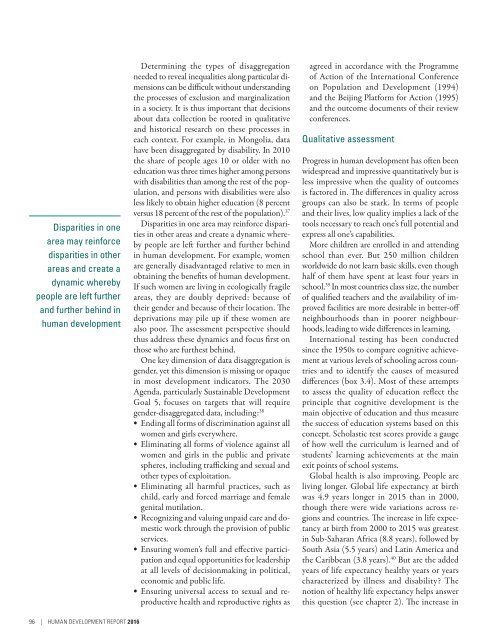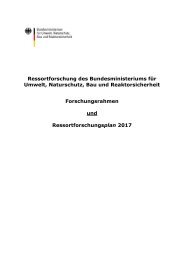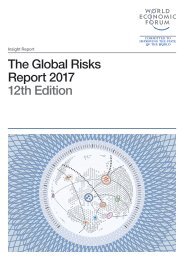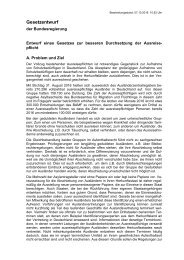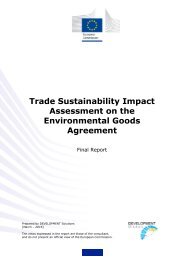Human Development Report 2016
6Tyccfrzw
6Tyccfrzw
You also want an ePaper? Increase the reach of your titles
YUMPU automatically turns print PDFs into web optimized ePapers that Google loves.
Disparities in one<br />
area may reinforce<br />
disparities in other<br />
areas and create a<br />
dynamic whereby<br />
people are left further<br />
and further behind in<br />
human development<br />
Determining the types of disaggregation<br />
needed to reveal inequalities along particular dimensions<br />
can be difficult without understanding<br />
the processes of exclusion and marginalization<br />
in a society. It is thus important that decisions<br />
about data collection be rooted in qualitative<br />
and historical research on these processes in<br />
each context. For example, in Mongolia, data<br />
have been disaggregated by disability. In 2010<br />
the share of people ages 10 or older with no<br />
education was three times higher among persons<br />
with disabilities than among the rest of the population,<br />
and persons with disabilities were also<br />
less likely to obtain higher education (8 percent<br />
versus 18 percent of the rest of the population). 37<br />
Disparities in one area may reinforce disparities<br />
in other areas and create a dynamic whereby<br />
people are left further and further behind<br />
in human development. For example, women<br />
are generally disadvantaged relative to men in<br />
obtaining the benefits of human development.<br />
If such women are living in ecologically fragile<br />
areas, they are doubly deprived: because of<br />
their gender and because of their location. The<br />
deprivations may pile up if these women are<br />
also poor. The assessment perspective should<br />
thus address these dynamics and focus first on<br />
those who are furthest behind.<br />
One key dimension of data disaggregation is<br />
gender, yet this dimension is missing or opaque<br />
in most development indicators. The 2030<br />
Agenda, particularly Sustainable <strong>Development</strong><br />
Goal 5, focuses on targets that will require<br />
gender-disaggregated data, including: 38<br />
• Ending all forms of discrimination against all<br />
women and girls everywhere.<br />
• Eliminating all forms of violence against all<br />
women and girls in the public and private<br />
spheres, including trafficking and sexual and<br />
other types of exploitation.<br />
• Eliminating all harmful practices, such as<br />
child, early and forced marriage and female<br />
genital mutilation.<br />
• Recognizing and valuing unpaid care and domestic<br />
work through the provision of public<br />
services.<br />
• Ensuring women’s full and effective participation<br />
and equal opportunities for leadership<br />
at all levels of decisionmaking in political,<br />
economic and public life.<br />
• Ensuring universal access to sexual and reproductive<br />
health and reproductive rights as<br />
agreed in accordance with the Programme<br />
of Action of the International Conference<br />
on Population and <strong>Development</strong> (1994)<br />
and the Beijing Platform for Action (1995)<br />
and the outcome documents of their review<br />
conferences.<br />
Qualitative assessment<br />
Progress in human development has often been<br />
widespread and impressive quantitatively but is<br />
less impressive when the quality of outcomes<br />
is factored in. The differences in quality across<br />
groups can also be stark. In terms of people<br />
and their lives, low quality implies a lack of the<br />
tools necessary to reach one’s full potential and<br />
express all one’s capabilities.<br />
More children are enrolled in and attending<br />
school than ever. But 250 million children<br />
worldwide do not learn basic skills, even though<br />
half of them have spent at least four years in<br />
school. 39 In most countries class size, the number<br />
of qualified teachers and the availability of improved<br />
facilities are more desirable in better-off<br />
neighbourhoods than in poorer neighbourhoods,<br />
leading to wide differences in learning.<br />
International testing has been conducted<br />
since the 1950s to compare cognitive achievement<br />
at various levels of schooling across countries<br />
and to identify the causes of measured<br />
differences (box 3.4). Most of these attempts<br />
to assess the quality of education reflect the<br />
principle that cognitive development is the<br />
main objective of education and thus measure<br />
the success of education systems based on this<br />
concept. Scholastic test scores provide a gauge<br />
of how well the curriculum is learned and of<br />
students’ learning achievements at the main<br />
exit points of school systems.<br />
Global health is also improving. People are<br />
living longer. Global life expectancy at birth<br />
was 4.9 years longer in 2015 than in 2000,<br />
though there were wide variations across regions<br />
and countries. The increase in life expectancy<br />
at birth from 2000 to 2015 was greatest<br />
in Sub- Saharan Africa (8.8 years), followed by<br />
South Asia (5.5 years) and Latin America and<br />
the Caribbean (3.8 years). 40 But are the added<br />
years of life expectancy healthy years or years<br />
characterized by illness and disability? The<br />
notion of healthy life expectancy helps answer<br />
this question (see chapter 2). The increase in<br />
96 | HUMAN DEVELOPMENT REPORT <strong>2016</strong>


